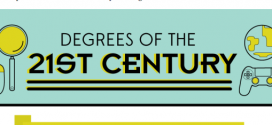With each new school year, technology becomes more central in modern education. That trend took another step forward with the recent pairing of one of America’s leading textbook publishers and a popular web learning platform.
Google Play for Education
Just last week, publishing house Houghton Mifflin Harcourt (HMH) announced they’ve teamed up with Google Play for Education, a popular program that allows K-12 students to learn via their own personal tablets.
Popular HMH programs like GO Math! and Journeys Common Core will be available to teachers and students, allowing them to connect with the material on an interactive level.
As of Monday, Samsung announced they were launching a new tablet in conjunction with the Google Play for Education program, a demonstration of how major companies are continuing to recognize how vital interactive materials are in the classroom.
How it Works
The roll out of Google Play for Education has been met with open arms.
Here’s how it works: Teachers log on and choose educational apps and videos for each specific course level and subject matter. Several case studies of classrooms have demonstrated how well the program has worked.
For example, in Hillsboro Township Public School system in Somerset County, New Jersey, the program was studied and found to be a success among middle school students. Each student could work at their own speed, allowing them to engage fully with each lesson’s level, and teachers and students alike easily adapted to the technology.
Other Applications
Of course the ease of learning in an interactive environment isn’t strictly applicable to children.
Students in Northeastern University’s Digital Media program, for example, can work to create content like the Google Play program, whether it’s as animators and graphic designers, or videographers and computer programmers. Popular elective classes offered include 3-D animation and interactive design, where students can explore the role of interactive media in a variety of fields, like advertising or entertainment.
And the curriculum of the Northeastern Master of Education program’s E-Learning and Instructional Design concentration also places a big emphasis on the value of online learning and the role it will play in the future of education.
Other classes, like Models for Learning Design and Technology as a Medium for Learning, explore the many ways students can learn in an interactive environment.
Looking Ahead
The use of interactive multimedia will only strengthen as time goes on, and students of all ages will continue to see the medium as a vital mode of learning—so long as it’s effective, flexible and tailored to both students’ and teachers’ needs.
As Mary Cullinane, chief content officer and executive vice president of Corporate Affairs at Houghton Mifflin Harcourt, says, “We believe that for a learning transformation to truly take hold, students and teachers must have great access to quality content.”




